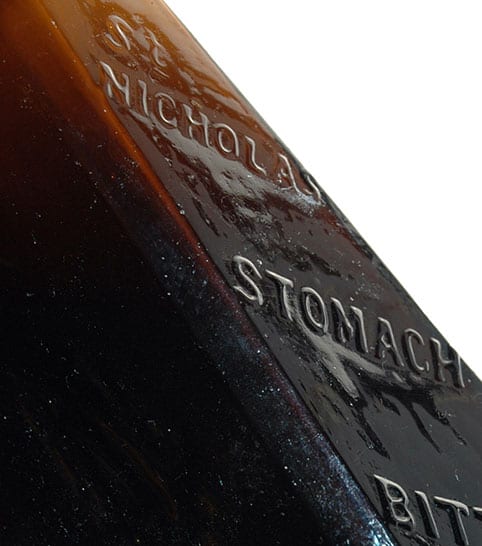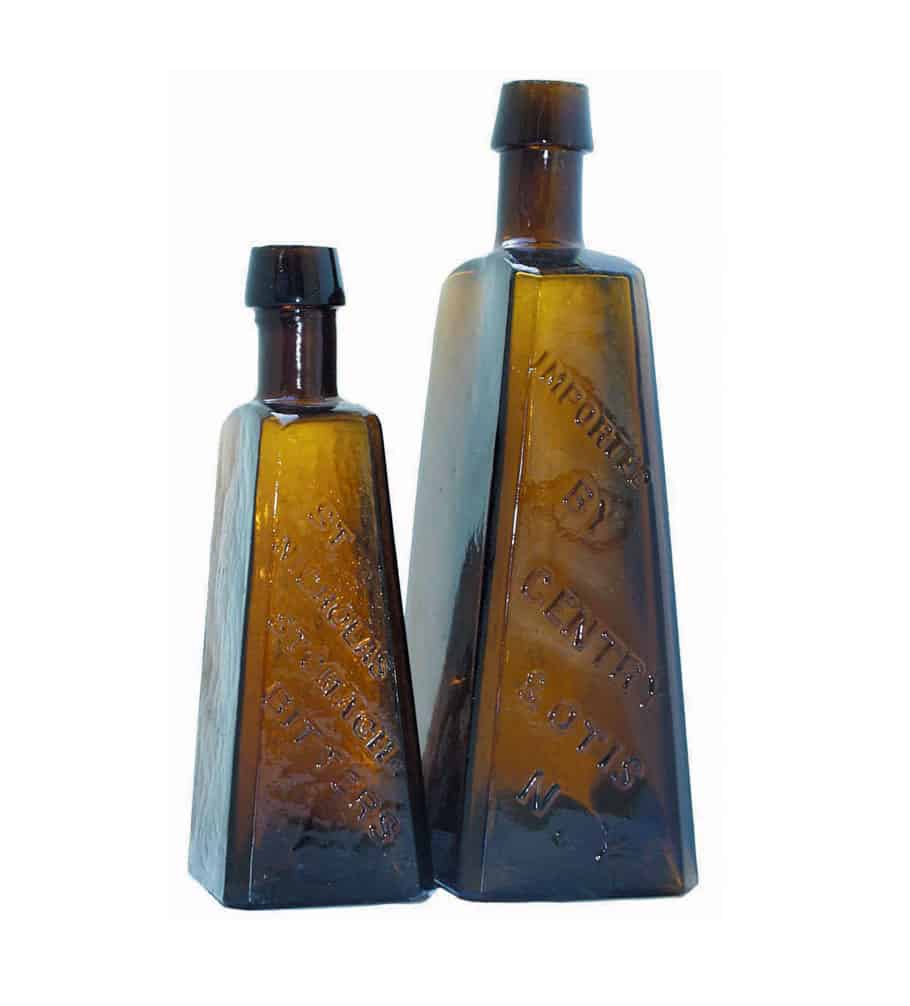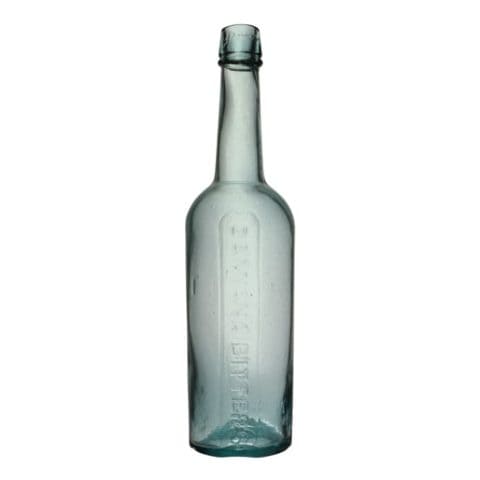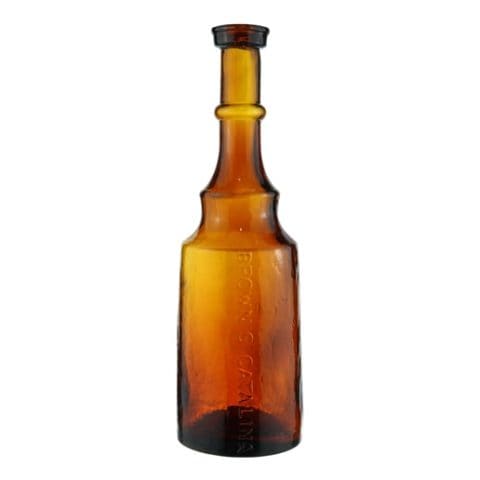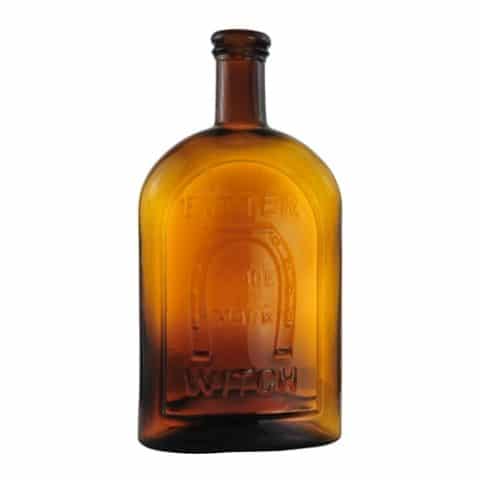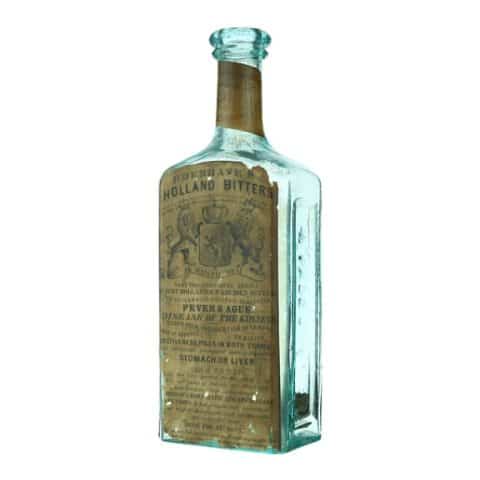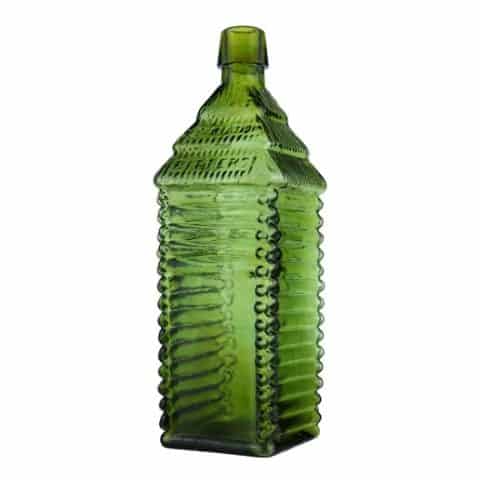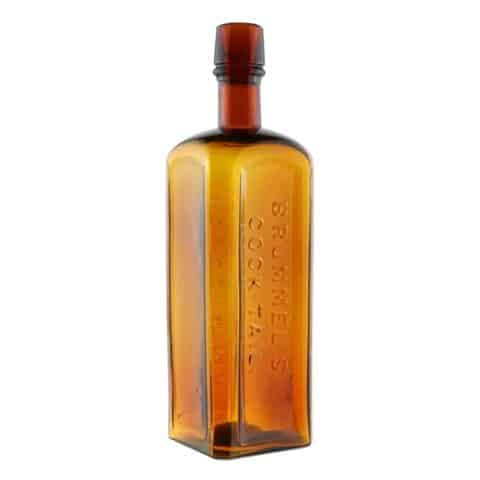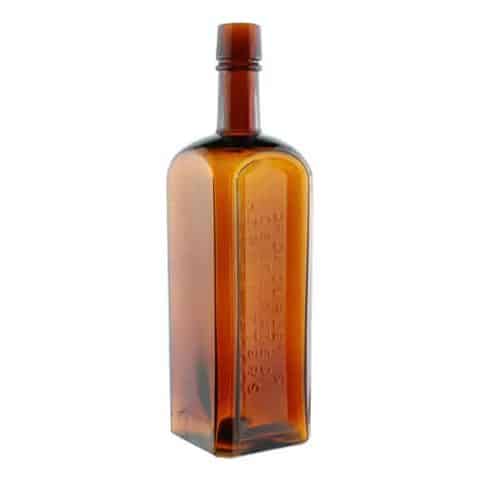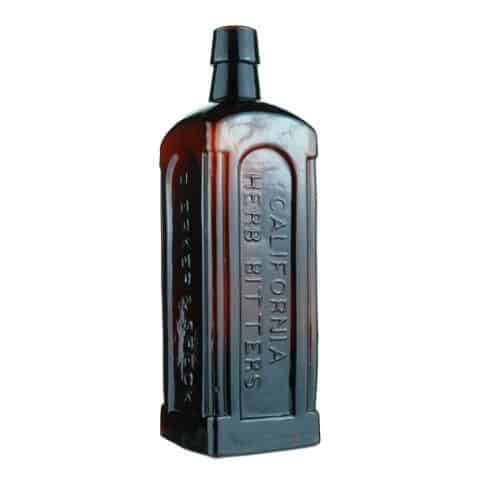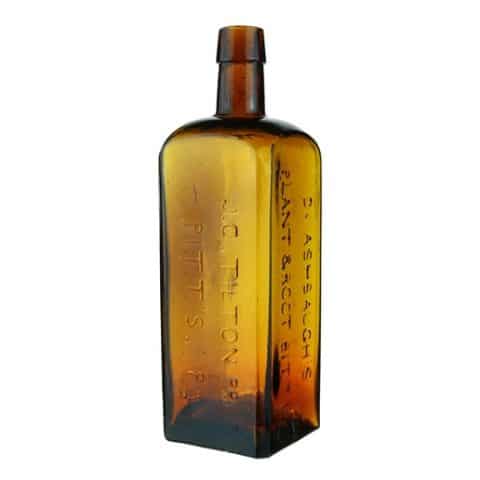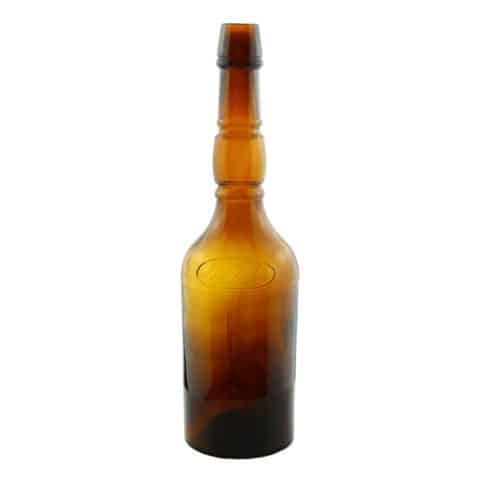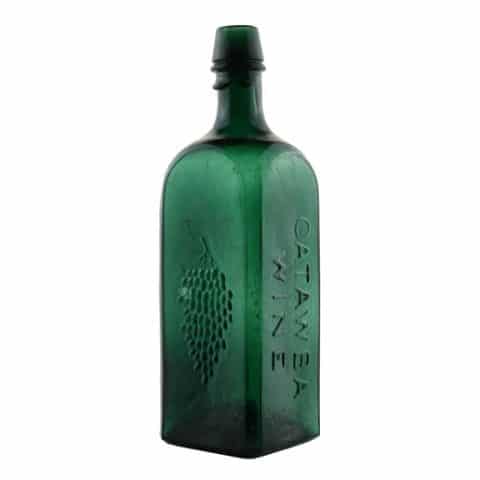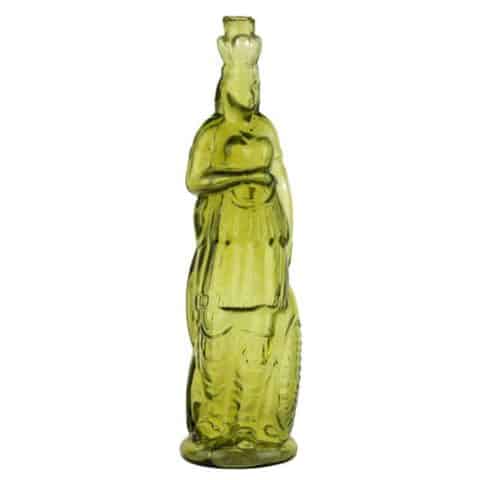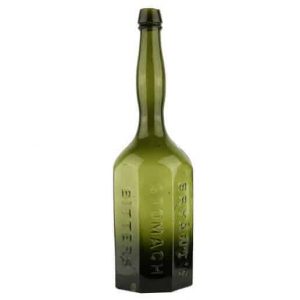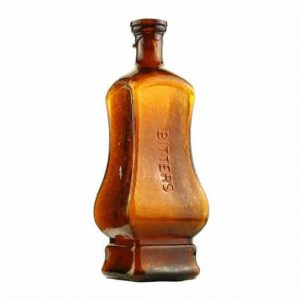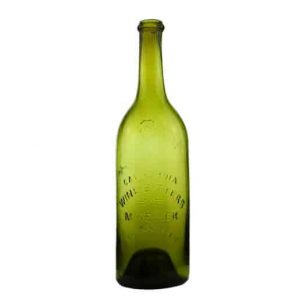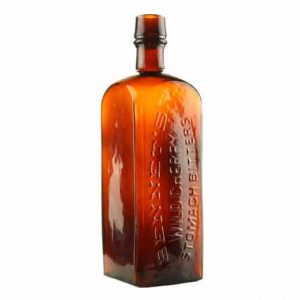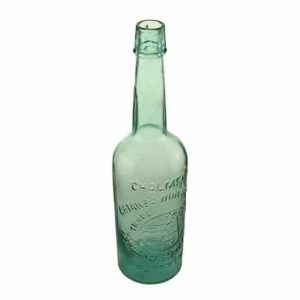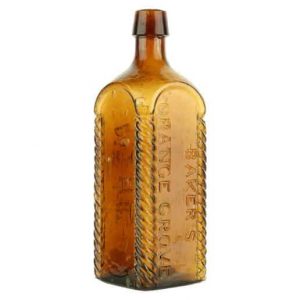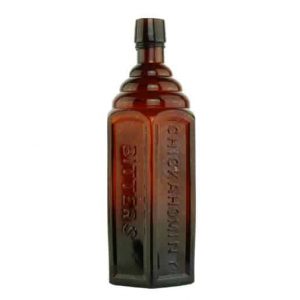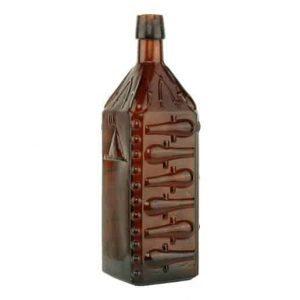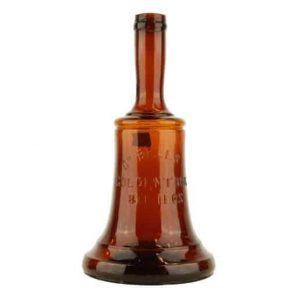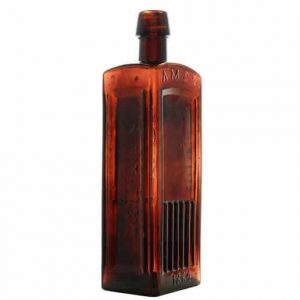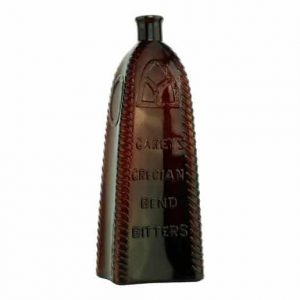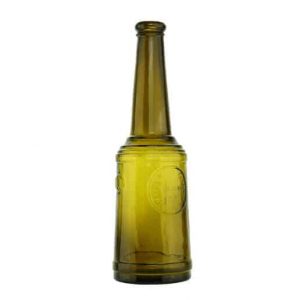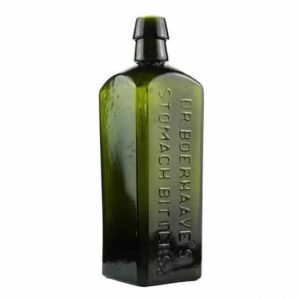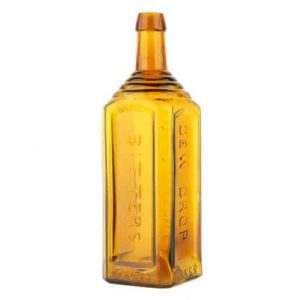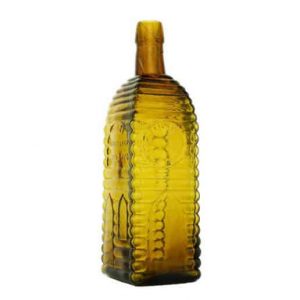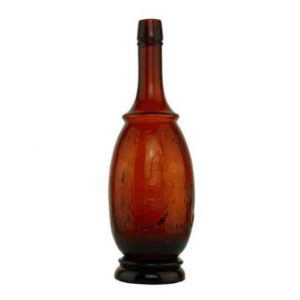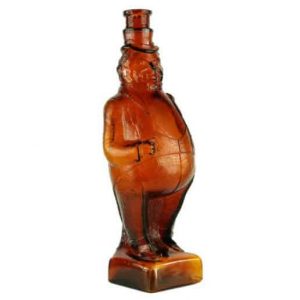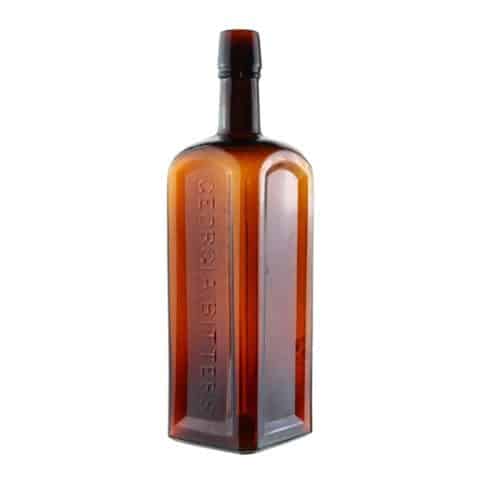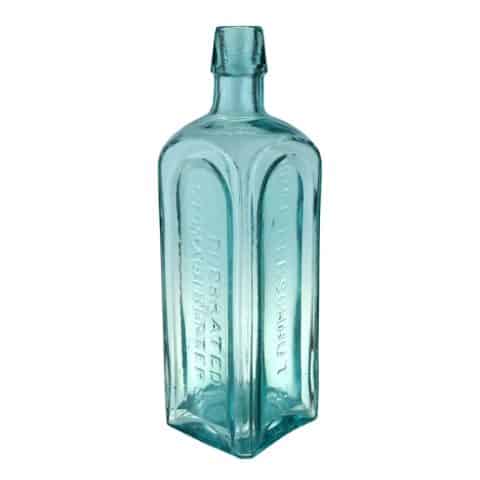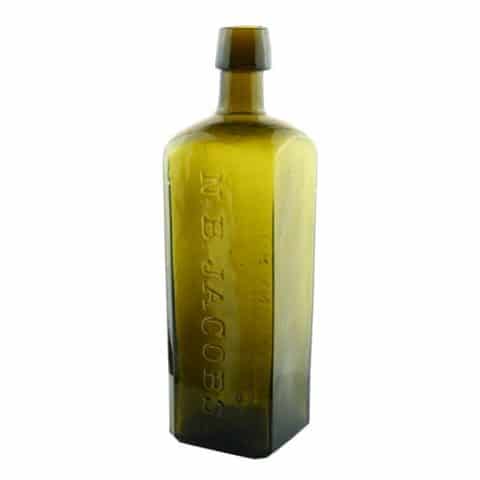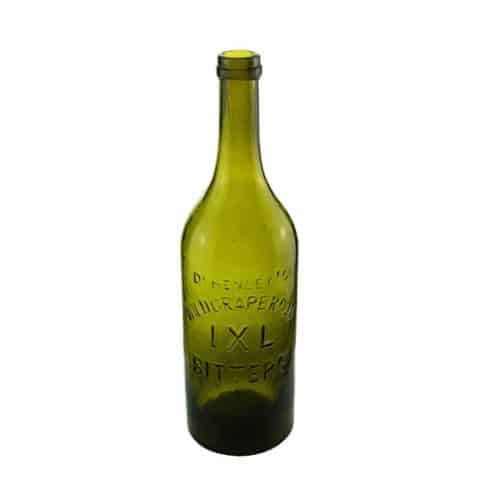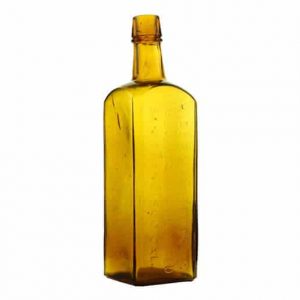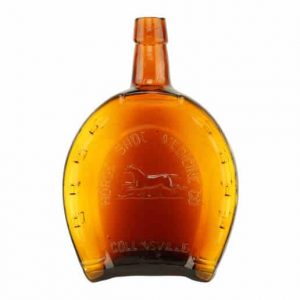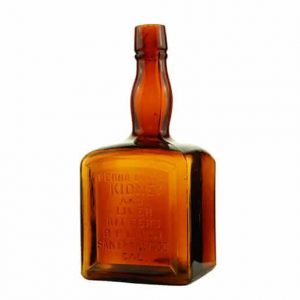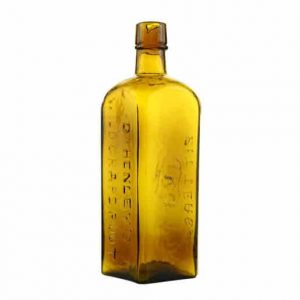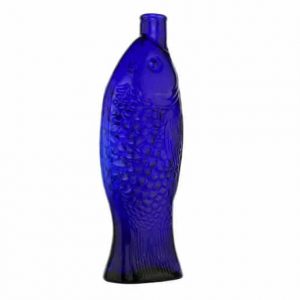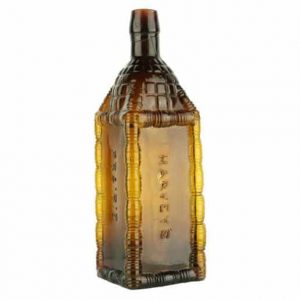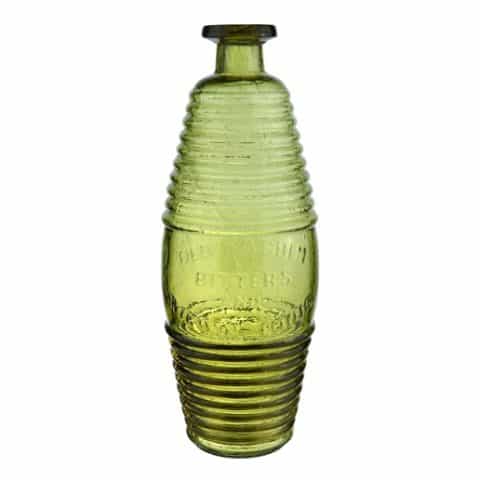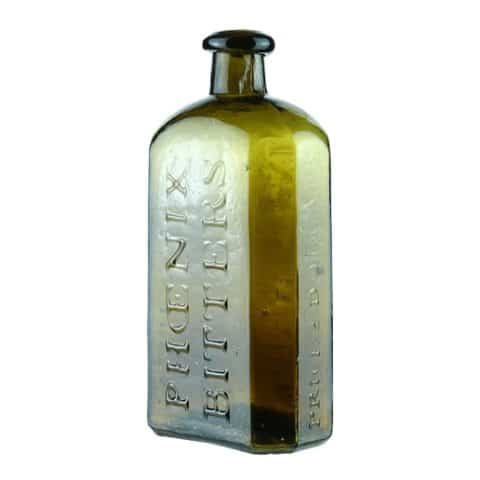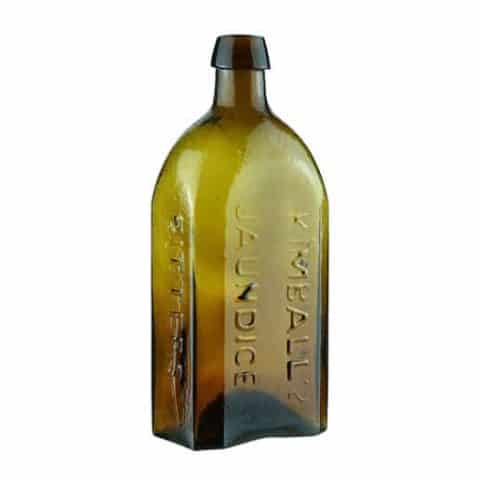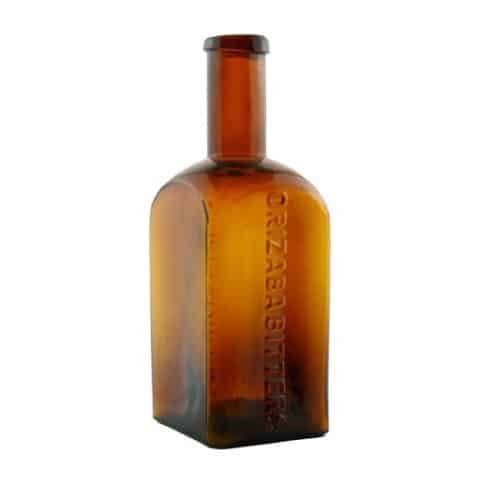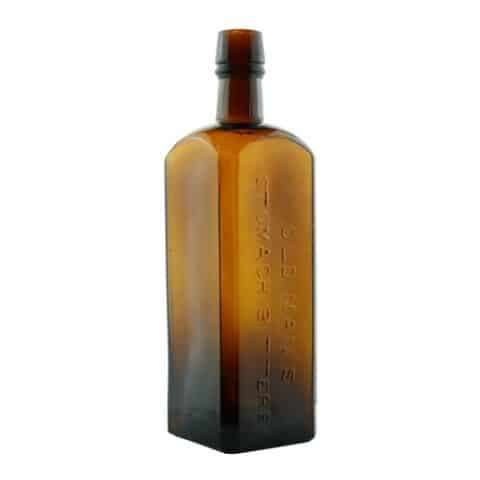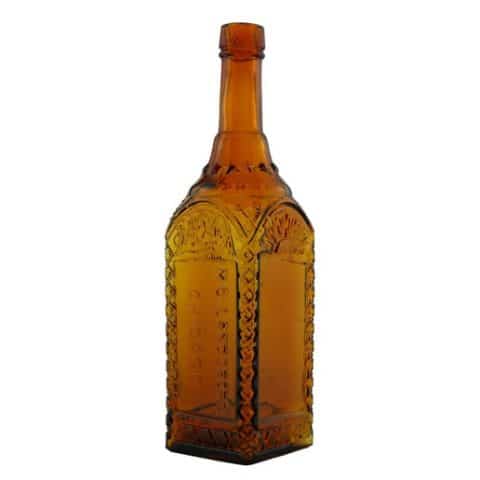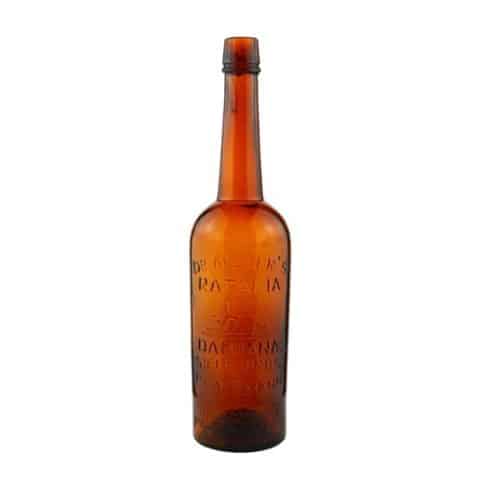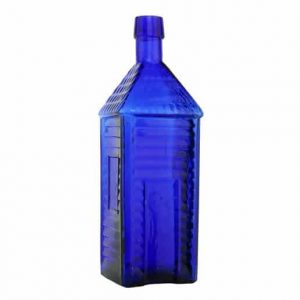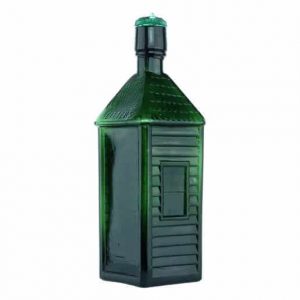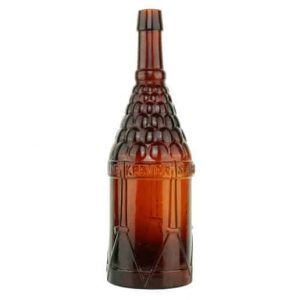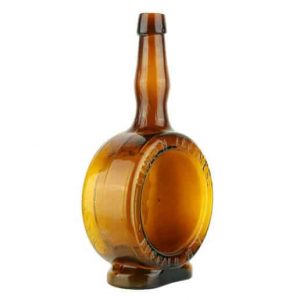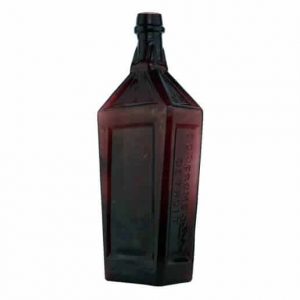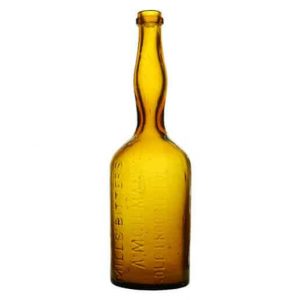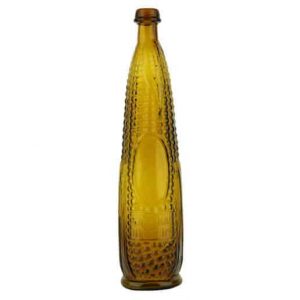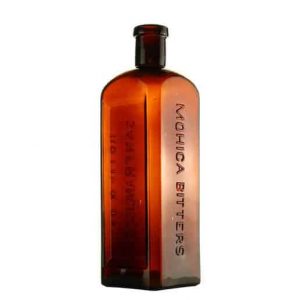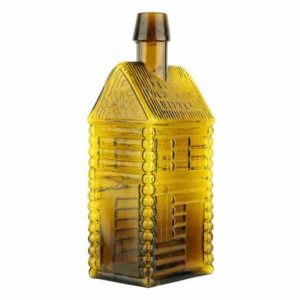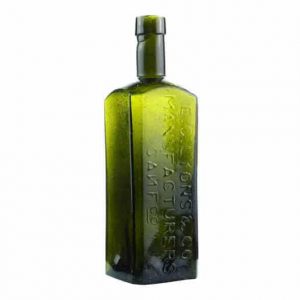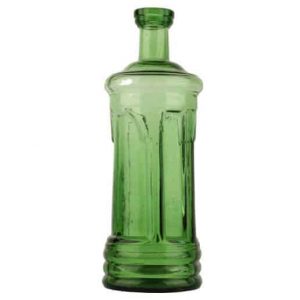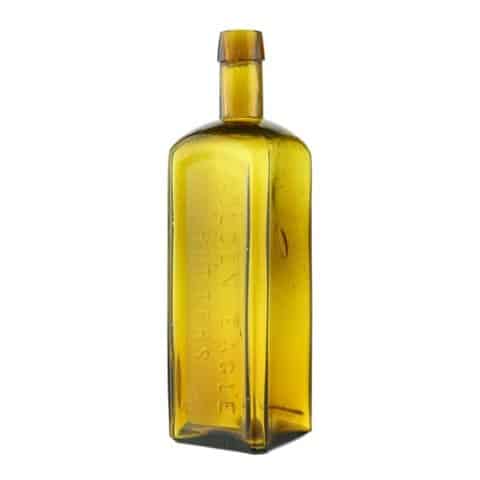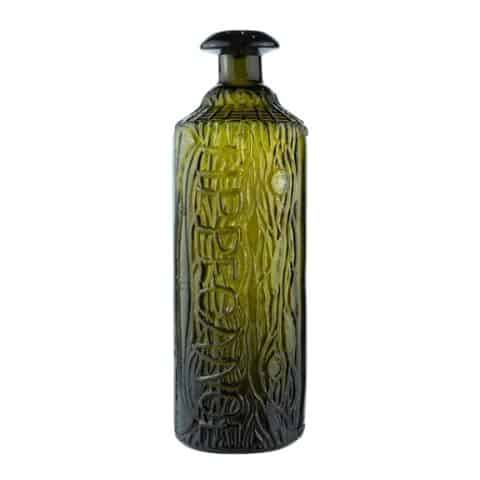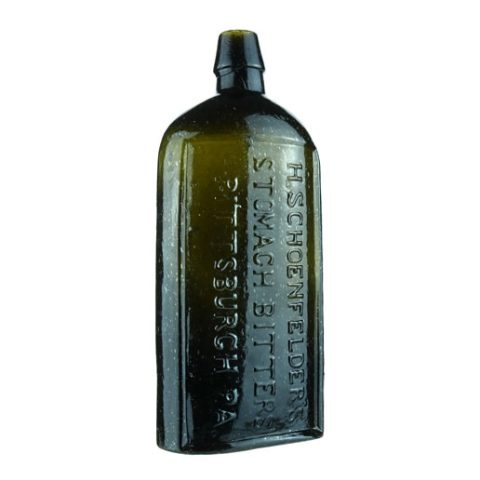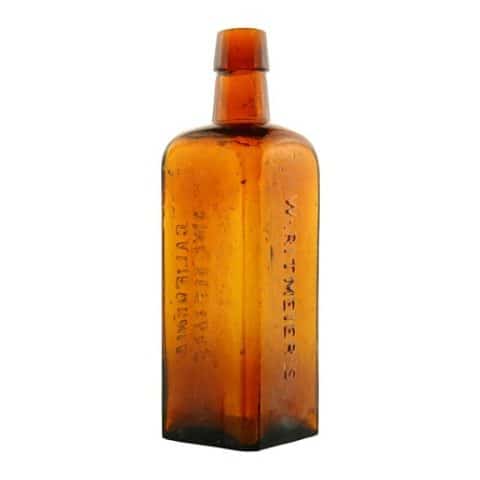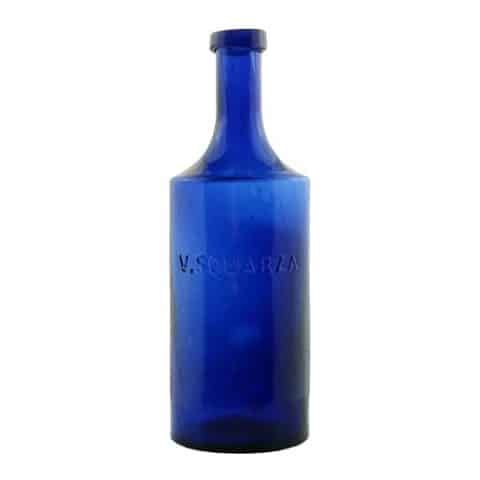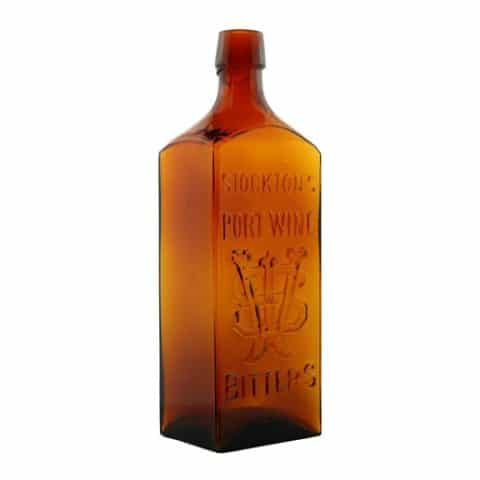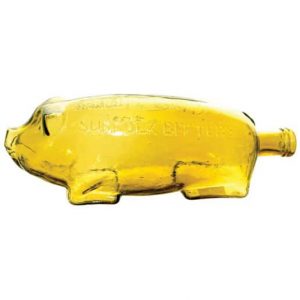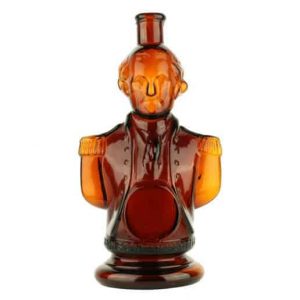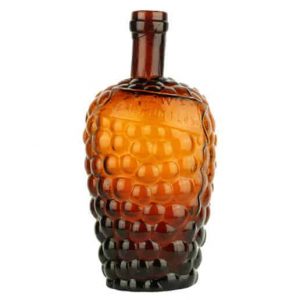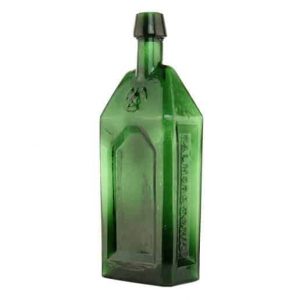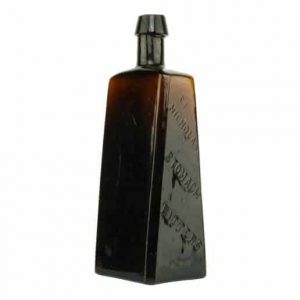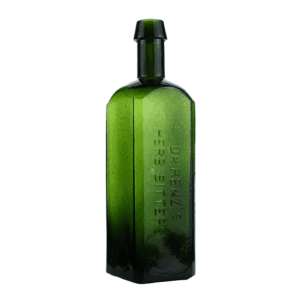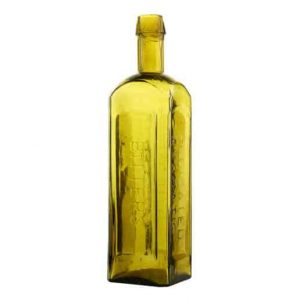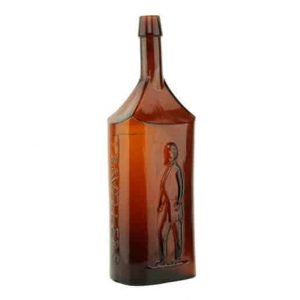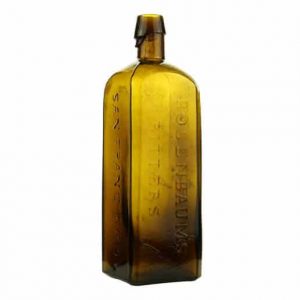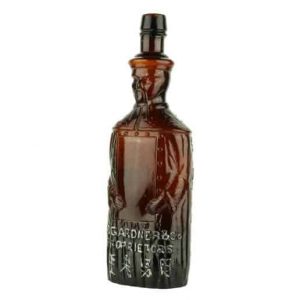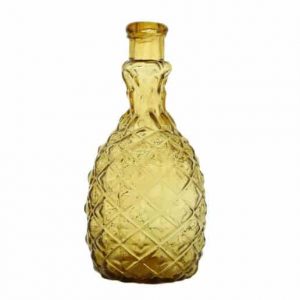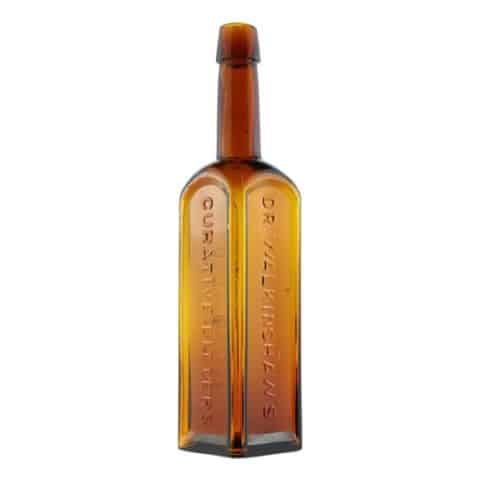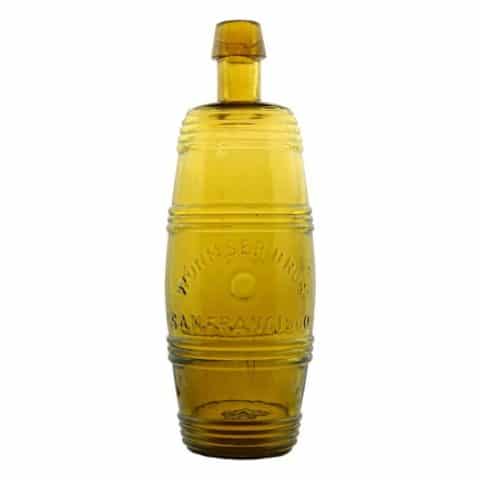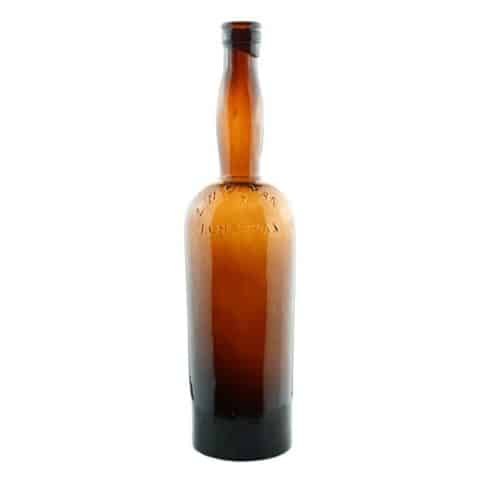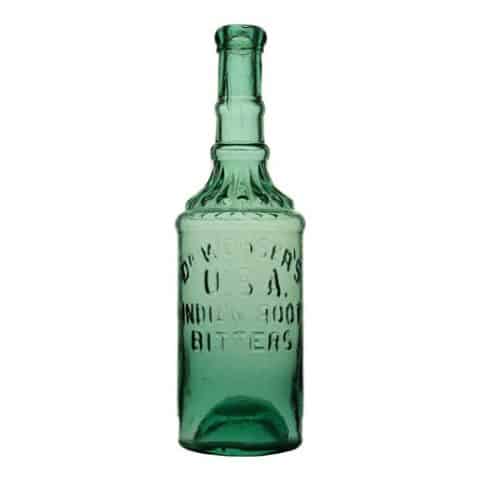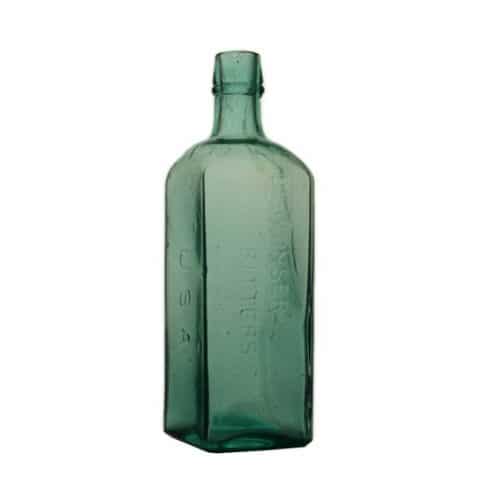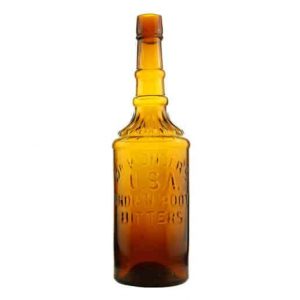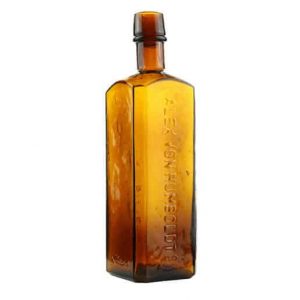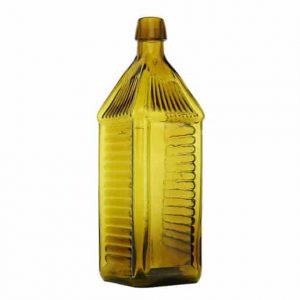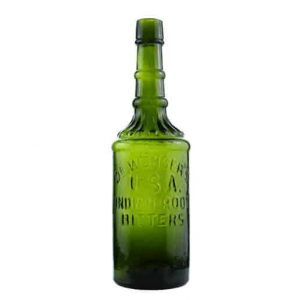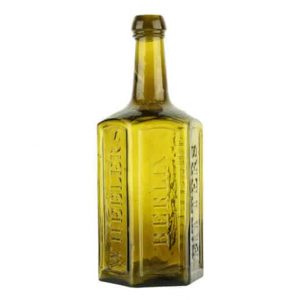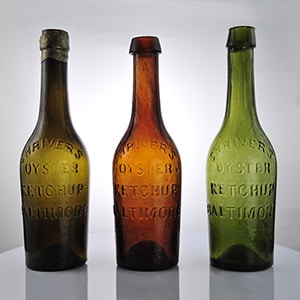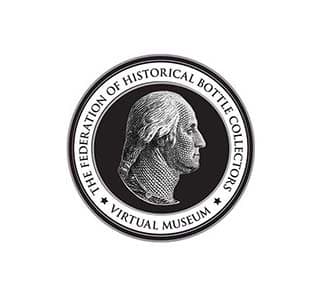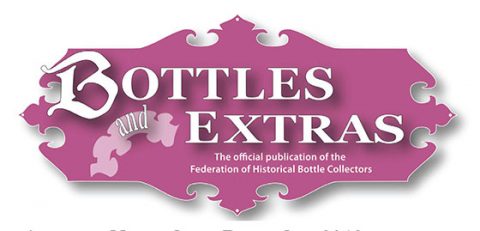St. Nicholas Stomach Bitters
St. Nicholas Stomach Bitters
Imported By Gentry & Otis N.Y.
S 16
Abram M. Gentry and George K. Otis
New York, N.Y.
Amber Tapered Rectangle
Provenance: Ferdinand Meyer V Collection
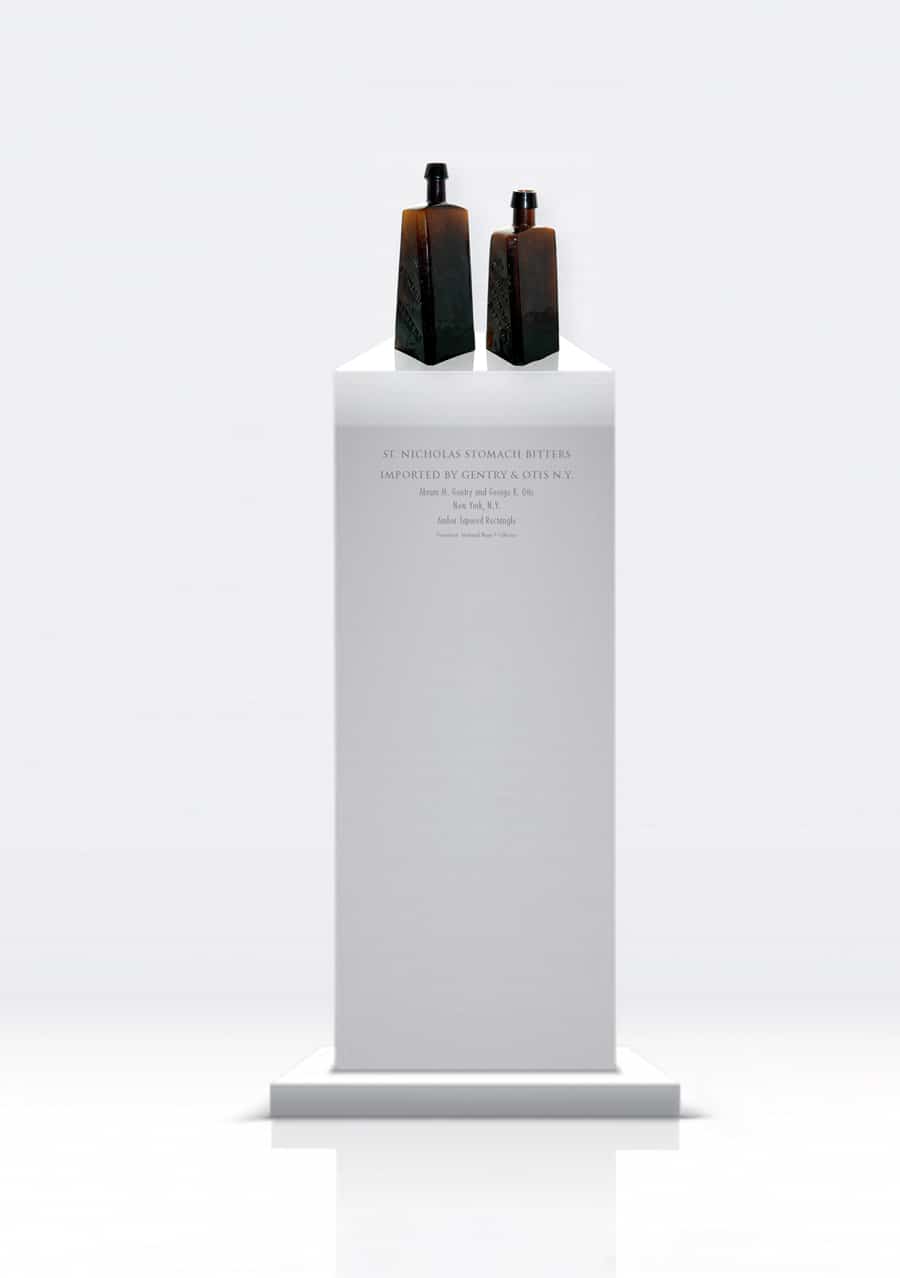
Our St. Nicholas Stomach Bitters bottle is embossed “Gentry & Otis” who were grocers in New York City in the late 1850s. A primary distribution point for their bitters was Houston, Texas where hundreds of cases were delivered via steamers from New York to Galveston.
The bottle can be found in two different sizes. Both sizes of the tapered rectangular bottles have four vertical corners that are chamfered from the base to a slightly arched shoulder. They are cataloged as S 16 and S 17. A strong neck connects to an applied long tapered collar or mouth. The bottles can be found with either a rough pontil mark or a metallic pontil mark.
Our museum example is the larger of the two sizes and is embossed ‘ST. NICHOLAS STOMACH BITTERS’ on one end side and ‘IMPORTED BY GENTRY & OTIS, N. Y.’ on the other end side. The copy is angled downwards from the shoulder to the base. The typographic line spacing is different on the two sizes as you might expect. Both bottle faces are blank and would have been where a paper label might have gone. No labeled examples are extant. The bottles typically exude character and have a certain crudeness.
S 16 is larger and extremely rare while the smaller S 17 bottle is considered very rare. Most S 16 examples are heavily etched and damaged. An S 16 example was found in an estate in Texas and examples were dug in New Orleans. A number of S 17 examples were dug in San Jose, California while an example was also found in Lake Tahoe.
The Carlyn Ring and W.C. Ham listing in Bitters Bottles is as follows:
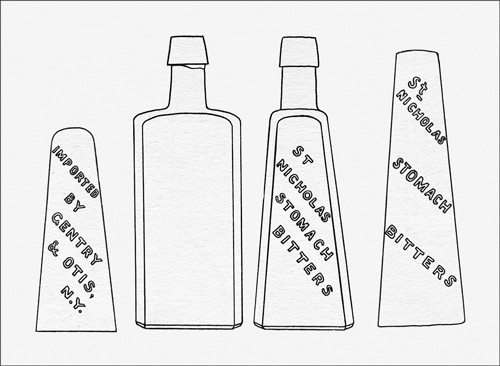
S 16 f // ST ( sd ) / NICHOLAS ( sd ) / STOMACH ( sd ) / BITTERS ( sd ) // f // IMPORTED ( sd ) BY ( sd ) / GENTRY ( sd ) & OTIS. ( sd ) / NY ( sd ) //
9 3/8 x 3 3/8 x 3 (7 3/8) 5/16
Tapered Rectangular, Amber, LTC, Applied mouth, Rough pontil mark, and Metallic pontil mark, Extremely rare
S 17 f // ST ( sd ) / NICHOLAS ( sd ) / STOMACH ( sd ) / BITTERS ( sd ) // f // IMPORTED ( sd ) BY ( sd ) / GENTRY ( sd ) & OTIS. ( sd ) / N.Y. ( sd ) //
7 1/2 x 2 3/4 x 2 1/2 (5 3/4) 3/8
Tapered Rectangular, Amber, LTC, Rough pontil mark and
Metallic pontil mark, Very rare
Note: A number of examples were dug in San Jose, California. Example found in Lake Tahoe.
Colonel Abram M. Gentry was at various times a merchant, government contractor, manager of transportation of the Confederate government, and railroad promoter and builder. Abram Morris Gentry, son of Joseph and Mary (Van Meter) Gentry, was born in New York on May 14, 1821. He set out for Houston, Texas at a young age in 1838 where he engaged in merchandising. He married Mary Frances Ratheron on October 29, 1844. Their eventual children were Charles R., Mary V., Cora, and Alonzo Gentry.
In Houston in 1845, the newly formed A. M. Gentry & Co. was offering package express and mail service to Texas locales and other growing cities in the United States, and abroad via stagecoach lines and steamers. Regular agents attended to the personal delivery of all incoming valuable letters and packages forwarded by their house in New Orleans via fast-running steamers to Galveston and Houston and all the intermediate landings. Once in Houston, the mail was connected to stagecoach lines which ran to Austin via Washington, Brenham, Independence, Rutersville, LaGrange, and Bastrop to Huntsville via Montgomery; also to Columbus, Richmond, and San Felipe, Texas.
Gentry then established A. M. Gentry & Co., Wholesale Grocers on Congress Street in downtown Houston in 1855 or so. They were importers of wines, liquors, cigars, hardware, crockery, and many other useful items of the time period. Up in New York City in 1856, A. M. Gentry was a partner with Lowrey, Gentry & Slote who were grocers addressed at 121 Front Street. By 1857, it was Gentry, Slote & Company, Wholesale Grocers, and Commission Merchants, No. 121 Front Street, New York (see below flask). The partners were Abram M. Gentry (Texas), Alonzo Slote (Texas), and George K. Otis, (New York). By 1860 it was just Gentry and Otis, grocers. This partnership is represented and embossed on our subject bottle which means the bottles were ordered and sold sometime between 1857 and 1860 or so. Gentry would set up a similar arrangement in Boston.
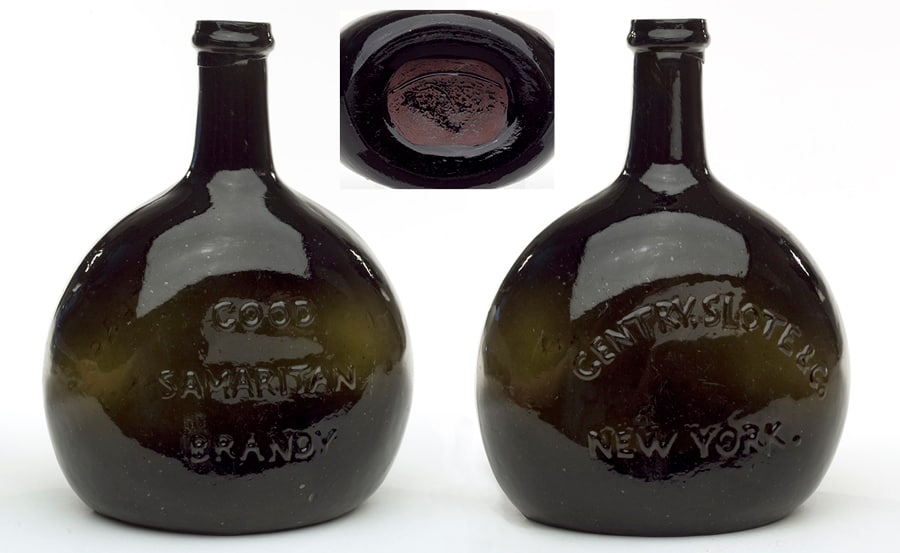
An advertisement found in the Southern Democrat (Waco, Texas) on November 18, 1858, stated that 200 cases of St. Nicholas Stomach Bitters, 50 cases of Hostetter’s Stomach Bitters, 49 cases of Turner’s Forest Wine Bitters, and 50 cases of Stoughton’s Stomach Bitters, among many other items, had just been received at A. M. Gentry & Co. who were the Texas agents for the St. Nicholas brand while Gentry & Otis were the proprietors in New York.
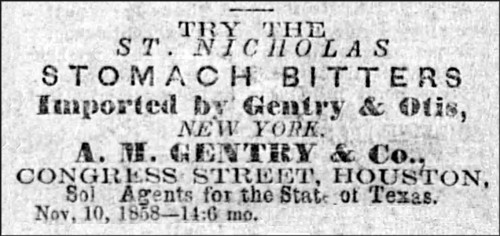
From the unusual facilities afforded through our connection with the New York firm of Gentry & Otis, we are enabled to offer for sale to the trade on the most accommodating terms, our Complete Stock, which has been greatly enlarged by recent arrivals.
A. M. Gentry Co., Congress Street, Houston, December 1858
By the late 1850s and early 1860s, A. M. Gentry had become a well-known individual in Houston and Harris County where he was elected to the Senate for the Eighth and Eleventh legislatures in 1859. He also ran for Lt. Governor in 1863. He was described as a man of fine commercial mind and of an enterprising disposition, and his active energies and faculties were always enlisted in the cause of Houston’s progress and prosperity. He was the originator of the scheme to connect Houston and New Orleans by railroad. Eventually, Gentry and Dr. I. S. Roberts were leaders in the construction of the T. & N.O. (Texas & New Orleans) railway, from Houston to Sabine, Texas at which point they were stopped by the outbreak of the Civil War.
Col. Gentry spent the war in the Supply and Commissary Department of the Confederate Army and was in the first company, christened the Gentry Guards, that left Houston to support the succession movement. The company went to Brazos Santiago (Brazos Island), under command of I. C. Stafford, on a vessel commanded by Captain Leon Smith, afterward a commodore of the Confederate States navy.
After the war, Gentry spent much of his time in New York City and at Huntington, Long Island, where he also had property. He also maintained his home in Houston and devoted most of his time to financing the Texas Western Narrow Gauge Railroad out of Houston.
Gentry died of paralysis of the heart in Huntington, Long Island on February 20, 1883, at the age of 61. He lies in rest at Glenwood Cemetery in Houston, Texas.
Primary Image: St. Nicholas Bitters bottle imaged on location by the FOHBC Virtual Museum midwest studio led by Alan DeMaison.
Support Image: Auction Lot 43: “GOOD / SAMARITAN / BRANDY – GENTRY, SLOTE & Co / NEW YORK.” Historical Flask, 1850 – 1860. Deep olive, plump chestnut form, applied mouth with ring – large red iron pontil scar, ht. 6 ¾”, near mint; (a little typical light wear, otherwise perfect). GXV-21. See Mark Vuono’s article, Appreciate ‘Lettered’ Flasks, (AB&GC, Dec. 2014). Mark rated this flask as, “very rare and possibly extremely rare”. A rare and important flask is believed to be only the third example of this mold to be offered in more than 20 years. The flask is equally important to whiskey collectors being a private mold pontiled whiskey. This example has bold embossing, and more importantly, great history behind it. – John Pastor, American Glass Gallery, Auction #32
Read More: St. Nicholas Stomach Bitters – Gentry & Otis – New, York
Read More: Reference to Bitters Bottles by Carlyn Ring and W. C. Ham. Use of St. Nicholas Stomach Bitters illustration courtesy Bill Ham.
Join the FOHBC: The Virtual Museum is a project of the Federation of Historical Bottle Collectors (FOHBC). To become a member.

